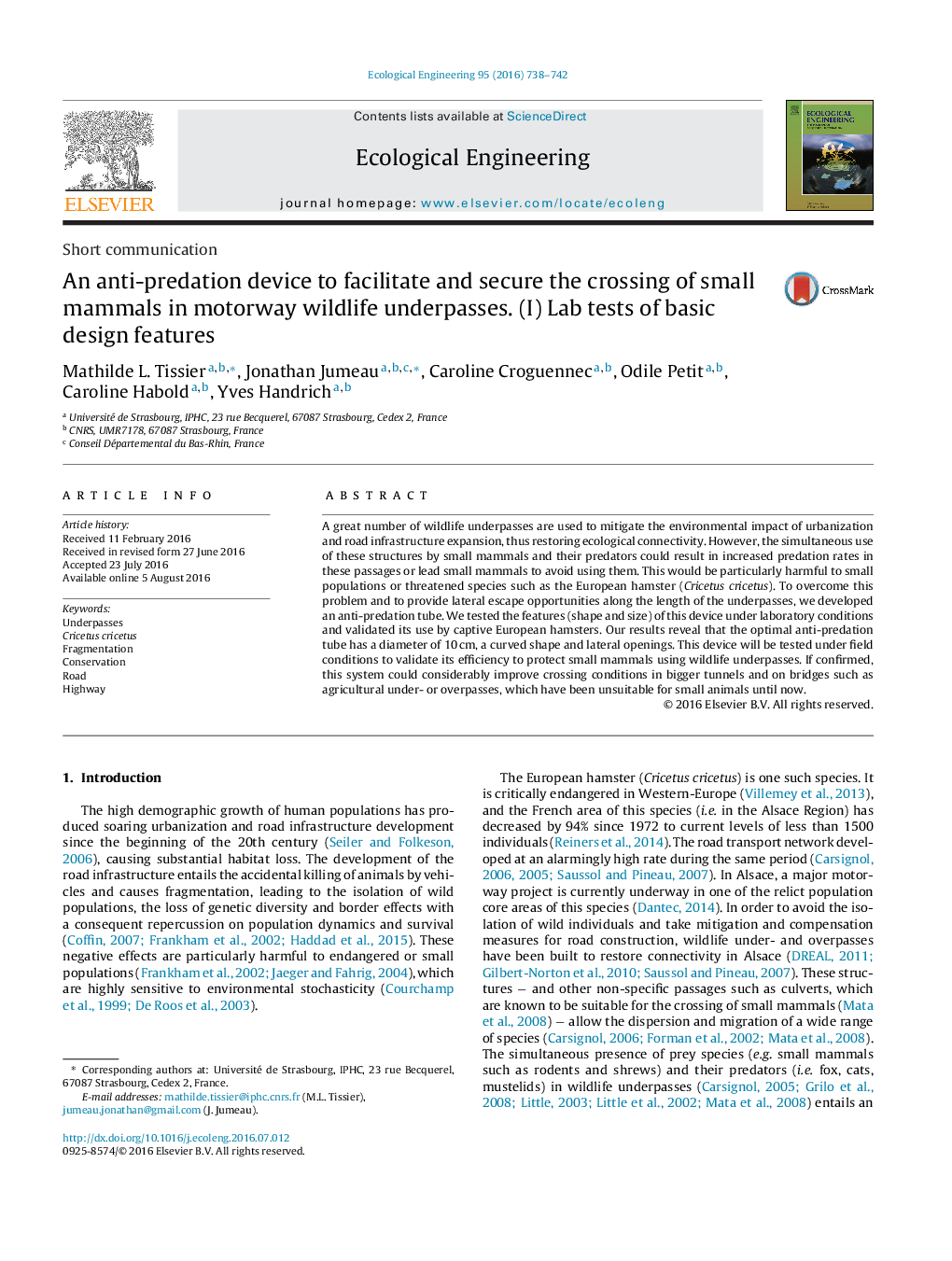| Article ID | Journal | Published Year | Pages | File Type |
|---|---|---|---|---|
| 4388504 | Ecological Engineering | 2016 | 5 Pages |
•Small mammals face a high risk of predation within underpasses.•Secure the crossing of underpasses by small mammals with a sub-tunnel.•Lab tests of the shape, size and use of an anti-predation device.
A great number of wildlife underpasses are used to mitigate the environmental impact of urbanization and road infrastructure expansion, thus restoring ecological connectivity. However, the simultaneous use of these structures by small mammals and their predators could result in increased predation rates in these passages or lead small mammals to avoid using them. This would be particularly harmful to small populations or threatened species such as the European hamster (Cricetus cricetus). To overcome this problem and to provide lateral escape opportunities along the length of the underpasses, we developed an anti-predation tube. We tested the features (shape and size) of this device under laboratory conditions and validated its use by captive European hamsters. Our results reveal that the optimal anti-predation tube has a diameter of 10 cm, a curved shape and lateral openings. This device will be tested under field conditions to validate its efficiency to protect small mammals using wildlife underpasses. If confirmed, this system could considerably improve crossing conditions in bigger tunnels and on bridges such as agricultural under- or overpasses, which have been unsuitable for small animals until now.
Graphical abstractFigure optionsDownload full-size imageDownload as PowerPoint slide
